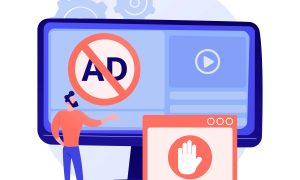Web scraping involves crawling websites to extract volumes of necessary data. Most data scraping aims to extract the most relevant and up-to-date data and put them into Excel sheets.
While the primary aim of data scraping is to have insightful data for various business purposes, it can be challenging from time to time.
You’ll face denial of bot access, structural data changes, IP blocking, and many more.
In this article, we’ve outlined thirteen critical web scraping challenges you may face during data extraction from websites. Read on to learn more about this.
1. IP Blocking Can Be a Threat
Standard web crawling bots may rarely find IP blocking as a problem in their web scraping process. IP blocking occurs in two scenarios: once, when a server detects a large volume of requests from the same IP address, and second when your crawler engages in multiple parallel requests.
Unfortunately, some stringent IP blocking mechanisms may block the crawler no matter how well it abides by the best web scraping policies and regulations.
You may consider integrating a few tools to identify and block automated web crawlers. This may help in crawling the website and extracting data for several purposes. Also, approaching various services like ScrapingAnt and others can save the day for you.
However, some Bot blocking services can reduce your site’s ranking by dwindling your website’s performance.
2. Bot Access May be Denied
It doesn’t matter what project; you’ll always require your bot’s access to the targeted website you want to extract information. Each website has the authority settings to allow or disallow bot access.
It is deemed illegal if you want to force your bot into crawling a website that already has an automated crawler system.
Hence, it’s wise to search for other websites with similar information to extract the required information through web crawling.
3. Structural Changes May Hinder Crawling Process
Through regular maintenance, websites always look to improve the user experience or add necessary features. This is essentially known as structural changes in websites.
The problem occurs when your web crawler tries to get across the website’s code elements, holding back the whole crawling process. There’s no wonder why companies in need of web data outsource this critical task to a third-party web scraping organization.
This is a better solution since a reliable web scraping company will closely monitor the crawling activities to derive structured and insightful data from meeting your requirements.
4. Captcha May Block Web Crawling Bots
Captcha keeps spam away; however, enabling Captcha may come in the way of accessibility of good crawler bots. Captcha is a common obstruction for most of the crawling bots.
Nonetheless, AI (Artificial Intelligence) and ML (Machine Learning) can solve this problem to a great extent while extracting pools of insightful data from the desired websites.
Although using these tools slows down the scraping process and acquiring unstructured data, this can be pretty handy in getting your job done in crises.
5. Dynamic Websites Interact with Crawling and Scraping
Today, websites are available with a dynamic coding system that serves their many users with versatile interactive services. But sadly, this may interact with the actions of web crawlers.
Web crawling is packed with infinite scrolling, loading images, product variants, and more working with Ajax calls. These aren’t ideally helpful for the web crawler to act smoothly.
6. Real-time Latency Is a Considerable Factor
In web scraping, extracting real-time data is essential, including use cases of updates on eCommerce product prices, customer ratings, customers’ purchase habits, etc.
Thus, using pricing intelligence with real-time latency proves to be an excellent system for the process. You may acquire such data in two ways; setting up cutting-edge infrastructure or approaching a data service provider to take care of the faster live crawls.
You may also go for use cases, including new feed aggregation, sports score detection, real-time inventory tracking, etc. If you consider using web scraping API to extract real-time information, things may look promising.
7. Dynamism in Web Data Can be Tricky
Web data is always dynamic, making scraping more challenging with each passing day. Besides, when it comes to extracting enormous data from various websites for business use cases, things may get out of hand.
Here, you may opt for a reliable data service provider. It’s cost-efficient and time-saving. Various websites are available to appropriately handle the web scraping requirements while avoiding obstructions to delivering structured and insightful data.
8. User-Generated Content Is Often Controversial
Another challenge you may face during web scraping is related to user-generated content. Using web crawlers on websites to get user-generated content from classified websites, small-niche websites, and business directories can be controversial.
User-generated content is the most prolific information on these public platforms; hence, scraping is a scarce option since crawling sources don’t permit crawling.
9. Diverse Web Designs
Website designers can develop various design structures to build their desired websites with HTML (Hypertext Markup Language). This poses a problem for the scraper as it needs to read and work out each site’s coding to extract the required information.
Hence, you might need to develop a scraping tool for each website.
Furthermore, regular updates in website settings for better user experience can also interact with a scraper developed for specific website setups.
Slight updates or changes in the website setting can deter the scraper’s overall desired performance.
10. Falling Prey to Honeypot Traps
Website owners often set up a trap called Honeypot to catch and block scrapers. Typically, Honeypots are invisible traps, only visible to the scrapers.
Eventually, human eyes fail to detect them when scraping but the scrapers are caught by the traps. Once trapped, the website will find out the server and IP address of the trapped scrapper and block it from operating.
Many scraping services use XPath to reduce the possibility of the scrappers getting trapped while extracting the required information.
11. Sluggish Webpage Loading Breaks Scraping Process
When websites get slow and take ages to load their pages, it challenges the scraping process. Usually, it’s not a big deal for human users since they can refresh the particular pages to get them reloaded with the same information.
However, this can disrupt the scraping process, as the scraper is not geared to tackle or troubleshoot it.
12. Login Requirement for Protected Information
On some websites, you’ll be required to log in first to acquire protected information. For instance, extracting contact information from websites may be a problem due to login requirements on many sites.
Once submitted, the browser will check your login credentials and connect the cookie value to your previous multiple access requests.
Thus, that particular website will know your identity and that you’d logged in earlier to their website. Hence, send the cookies with requests when your scraping requires a login.
13. Limited Rate of Access
One of the common hurdles a scraper may encounter while extracting information is rate-limiting. In this, the desired website ensures that a limited number of accesses from the same IP address can be permitted.
The limited access will vary from website to website. It will typically be based on the number of operations within a certain period or the volume of data you use from the site.
Consider using a rotating proxy to get IPs from loads of addresses. This will ease your multiple connection requests.
Best Web Scraping Practices
Since you’re now well aware of the challenges, you must know the best practices in the web scraping business to keep your operation clean and acceptable.
Here’s the best web scraping practices list:
- Make sure you check the Robots.txt file before opting for scraping.
- Maintain a decent gap between sending connection requests so the server doesn’t experience any operational failures.
- Use a headless browser. This is essentially GUI-less with a command-line interface for execution. They’re faster and more efficient.
- Avoid hampering the users’ browsing experience by executing the scraping operation during non-peak hours. This also enhances the scraping speed and performance.
- Be careful of Honeypot traps when scraping. As discussed earlier, Honeypot traps can outsmart your scrapers through links that you might find suspicious as a human user.
Following these best practices will not only get to your desired amount of insightful and well-structured data but your scraping will be considered acceptable.
If you’ve been experiencing a series of challenges during web scraping, our thirteen critical and common list of challenges will guide you.
Be sure to execute the scraping tasks with appropriately developed scrapers. Invest in hiring the best coders or service providers to get the job done.
Lastly, practice the best scraping policies to enhance your performance while reducing risks at the web users’ end.































































